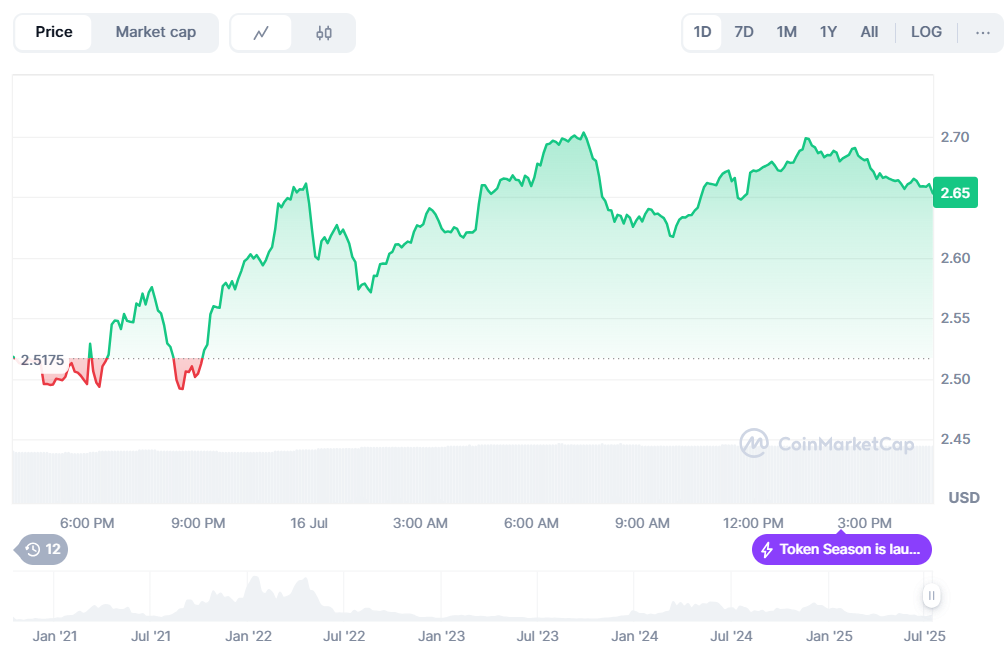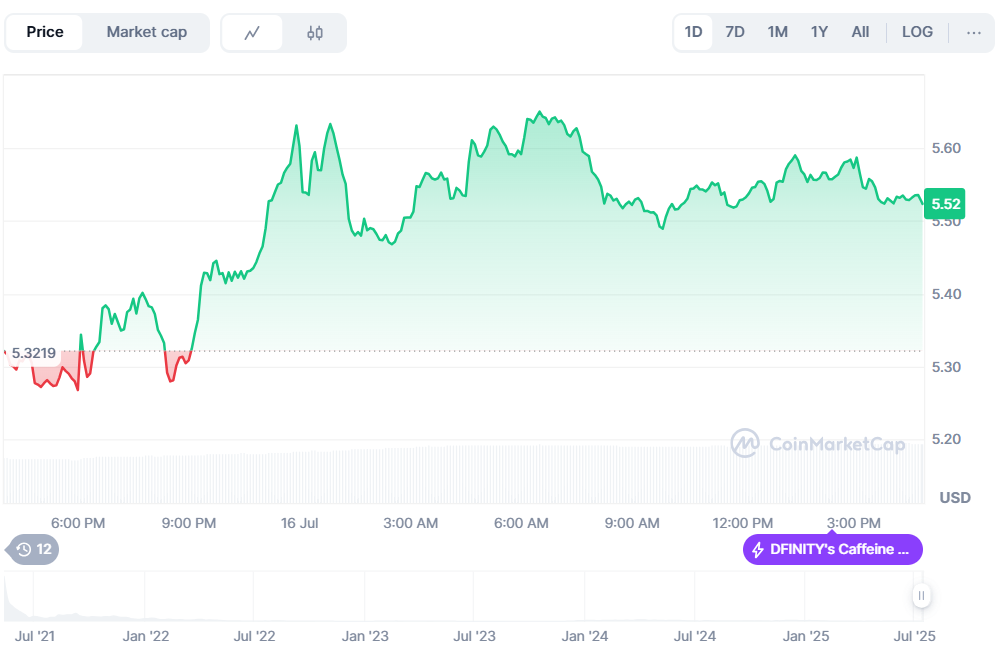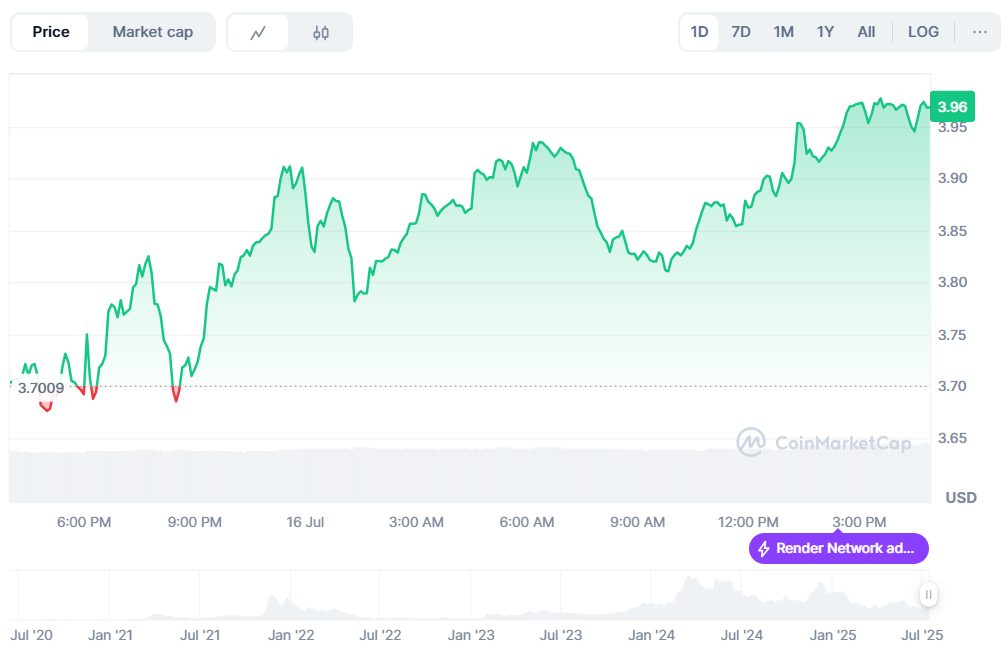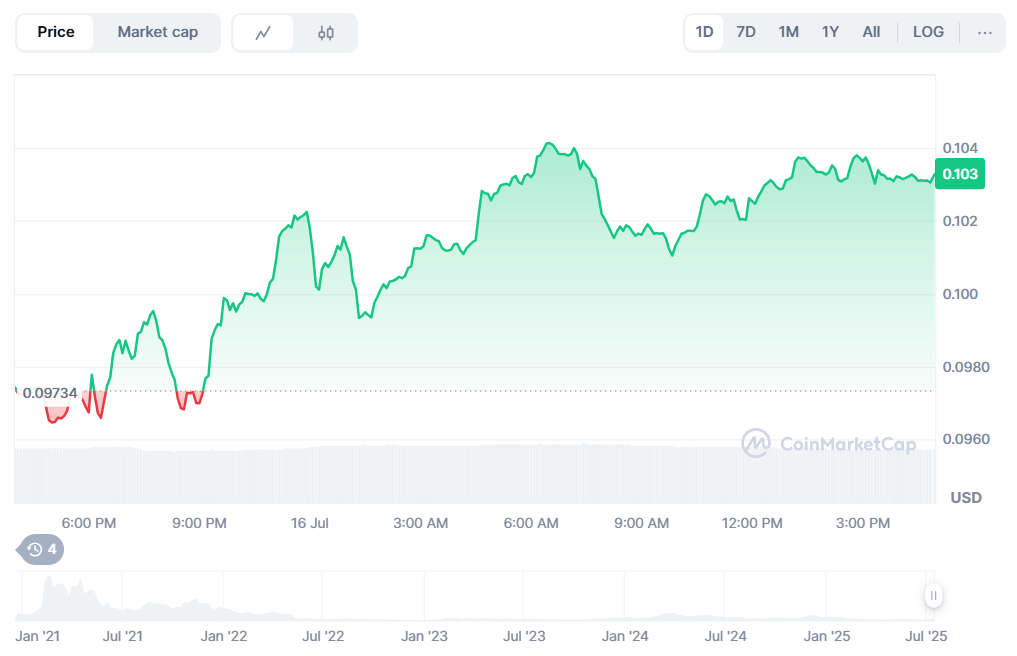Artificial Intelligence (AI) has moved from theory to reality, becoming a key force in both our daily lives and the evolving crypto landscape. Beyond public tools like ChatGPT, some of the most exciting developments are happening at the intersection of AI and blockchain.
This convergence has sparked the emergence of AI-centric crypto tokens—digital assets built to power platforms that embed machine learning into their core functions. These projects are pushing boundaries in areas like automation, security, data management, and user personalization. From optimizing on-chain decisions to enabling real-time analytics, AI is reshaping the way blockchain systems function.
Many of these tokens also include governance rights, letting users actively shape the future of the protocols they support. As AI and crypto grow more interconnected, they’re laying the foundation for smarter, more efficient digital ecosystems.
Read more: Crypto Investing vs. Crypto Trading
Snapshot of the Trending AI Crypto coins
| Coin Name | Current Price | Market Capitalization |
| Near Protocol | $2.65 | $3.28 billion |
| Internet Computer | $5.52 | $2.95 billion |
| Render | $3.96 | $2.05 billion |
| Bittensor | $437.50 | $4.12 billion |
| The Graph | $0.1031 | $1.01 billion |
Near Protocol (NEAR)

Near Protocol focuses on incentivising a network of computers to operate a platform for developers to create and launch decentralised applications. It uses the process of sharding to split the network’s infrastructure into segments for nodes to only have to handle a fraction of the network’s transactions. Sharding is expected to be more efficient and requires less computing power.
Near Protocol works similar to other cloud companies like Amazon Web Services, over which other applications can be built. But unlike legacy solutions where there is a single entity, NEAR is operated and maintained by a distributed network of computers.
Read more: What is Near Protocol (NEAR)
Internet Computer (ICP)

Internet Computer (ICP) protocol gives us the power of limitless smart contracts to host data, computing, user experience and content, on-chain. It allows us to build tamperproof Web 3 social media, enterprise infrastructure, gaming and virtual reality. Internet Computer (ICP) gives full-stack decentralisation and multi-chain options. It focuses on scalability and utility with a low carbon footprint. It is committed to building Greentech Web3 solutions.
Render (RENDER)

Render is an Ethereum blockchain-based distributed GPU network that functions as an essential platform for animation, VFX rendering, and motion graphics. Its native token, Render (RNDR), serves as a utility token specifically designed for utilization within the Render network. The network comprises two primary stakeholders: 1) Creators and 2) Node operators. Through the Render network, creators gain access to the immense GPU power available on the network, enabling them to generate high-quality images and visually captivating content at exceptional speeds and reduced costs. On the other hand, node operators lease out their GPU processing power to these creators and, in return, receive render tokens as rewards.
Bittensor (TAO)

Bittensor is an innovative open-source protocol that powers a decentralized machine-learning network built on blockchain technology. It facilitates a collaborative training environment where machine learning models work together, earning rewards in the form of TAO tokens based on the valuable information they contribute to the collective intelligence. Additionally, TAO enables external access, allowing users to tap into the network’s wealth of knowledge while guiding its activities to align with their specific requirements.
At its core, Bittensor’s ambitious goal is to establish a pure marketplace for artificial intelligence, a fair and incentivized arena where consumers and producers can engage in trustless, open, and transparent interactions.
The Graph (GRT)

The Graph is a decentralized, open-source protocol that utilizes distributed ledger technology to gather data independently, eliminating the need for intermediaries. This protocol functions as a worldwide APU (Application Programming Interface) designed to index and organize data efficiently. It leverages the GraphQL language to enable easy accessibility and processing.
Similar to how Google indexes the web, The Graph protocol indexes blockchain data. However, indexing blockchain data poses challenges due to the presence of numerous smart contracts storing data, which can hinder swift query responses by decentralised applications (DApps). To address this, The Graph protocol employs subgraphs to effortlessly retrieve data from the blockchain. Subgraphs serve as open APIs that specify the data to be indexed and its storage method.
The native token of The Graph network is called GRT. GRT is utilized to allocate resources within the network. It is an ERC-20 crypto token that can be stored in Ethereum (ETH) and other ERC-20 compatible wallets.
Final Thoughts
The convergence of blockchain and artificial intelligence is opening up a transformative chapter in the crypto space—driving the creation of smarter, more secure, and highly efficient decentralized technologies. At the heart of this evolution are AI-powered tokens, built to support intelligent computing, enhanced automation, and privacy-first data ecosystems that tackle real-world digital problems.
As these technologies evolve, such tokens could become foundational to the next generation of digital infrastructure. That said, the projects highlighted here are based on our independent research and analysis. We encourage all users to conduct their own due diligence before making any investment decisions in crypto.
Read more: What are Crypto Trading Bots
Stay up to date with the latest crypto news on ZebPay blogs. Get started with crypto trading in a flash with ZebPay!
Disclaimer:
Crypto products and NFTs are unregulated and can be highly risky. There may be no regulatory recourse for any loss from such transactions. Each investor must do his/her own research or seek independent advice if necessary before initiating any transactions in crypto products and NFTs. The views, thoughts, and opinions expressed in the article belong solely to the author, and not to ZebPay or the author’s employer or other groups or individuals. ZebPay shall not be held liable for any acts or omissions, or losses incurred by the investors. ZebPay has not received any compensation in cash or kind for the above article and the article is provided “as is”, with no guarantee of completeness, accuracy, timeliness or of the results obtained from the use of this information.












Leave a Reply